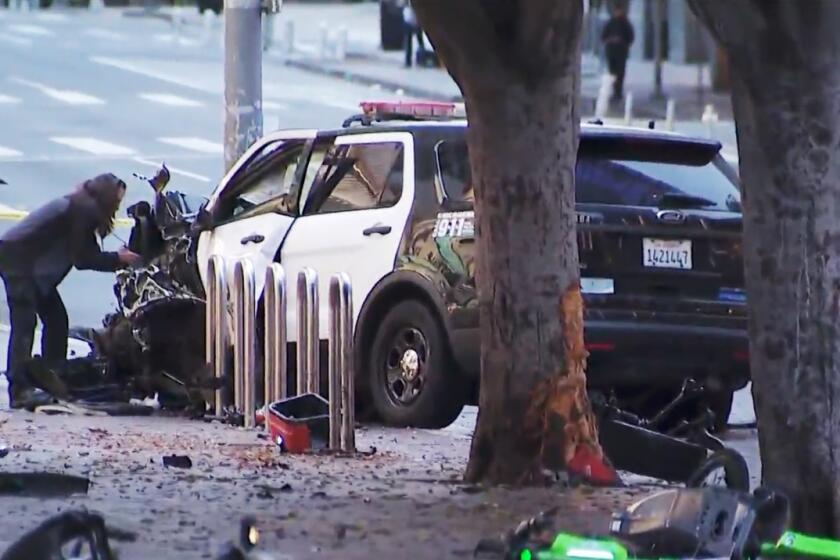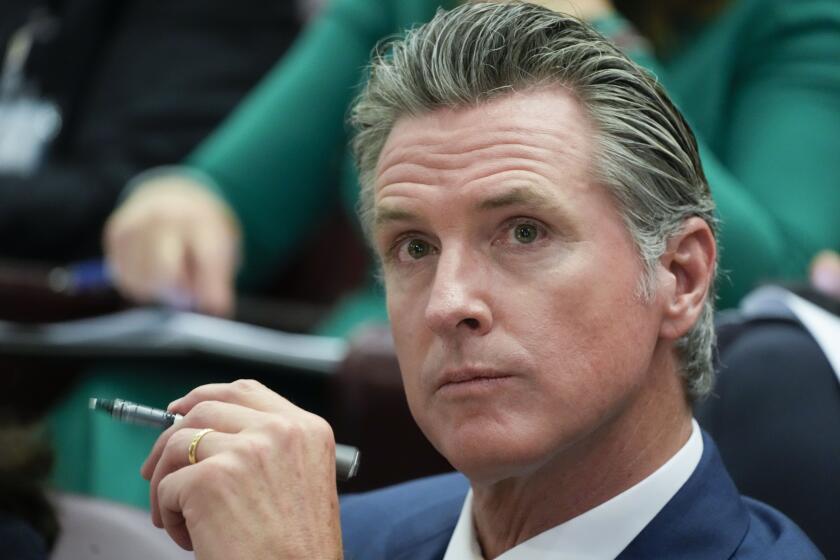Daylight saving time is ending. Should we not do the time warp again?
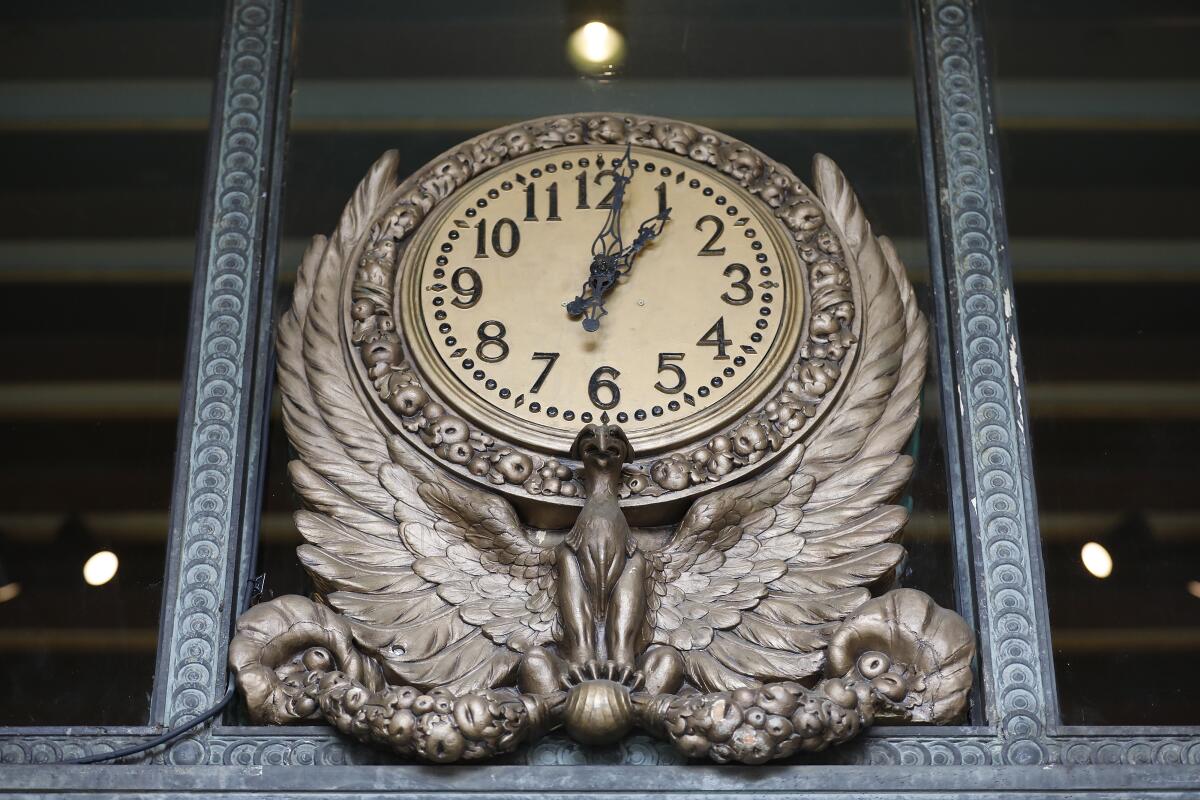
Good morning. It’s Friday, Nov. 3. Here’s what you need to know to start your day.
- Daylight saving time is ending and we want to hear from you
- Porter and Schiff may be headed for a runoff
- Why so many actors are launching their own businesses
- And here’s today’s e-newspaper
Start your day right
Sign up for Essential California for news, features and recommendations from the L.A. Times and beyond in your inbox six days a week.
You may occasionally receive promotional content from the Los Angeles Times.
Should we not do the time warp again?
We’re two days away from our twice-yearly reminder that for most of the U.S. and roughly a third of the world’s nations, time is an illusion. Soon then will be now.
Daylight saving time (I’ll just call it DST moving forward) ends Sunday when we move our clocks back an hour into standard time. Then, in 19 weeks, the government says it’s actually one hour in the future (except for two states and U.S. territories) and we’ll go with that — at least at the social level — until we do the time warp all over again.
DST has been a thorn in our circadian side from the get-go. It began in Europe during WWI and was enacted in the U.S. in 1918, mainly as an effort to conserve fuel to aid the war effort. But business also backed the change, since it gave people an extra hour of daylight to shop. Through the rest of the 20th century, we adopted various forms of DST, extended it further into the year and even tried to make it year-round during the oil crisis in the ‘70s, though that experiment was short-lived.
And for as long as we’ve been tinkering with our social construct of time, people have been wondering why we do this and whether we should stop.

Roughly a century later, we’re still giving ourselves jet lag without flying anywhere. Why do we still do this?
Because “no one can agree on exactly where to keep the time,” said Heinrich Gompf, a sleep researcher with UC Davis Health’s Department of Neurological Surgery.
I asked Gompf what’s happening at the neurological level and why our bodies tend to make it clear they don’t appreciate subjective time travel.
He said it comes down to our brains’ suprachiasmatic nucleus, “the master clock” that we each run on. It relies on sunlight — particularly morning light — to sync up to the world outside ourselves. Changing our clocks creates a mismatch, he explained, resulting in “internal tension between our internal clock and our external social calendar.”
The start and end of DST each affect our health, but Gompf pointed to research that springing ahead (the start of DST) is particularly harmful. People get less sleep, especially kids. There’s an uptick in heart attacks and strokes immediately following the change. Some studies show fatal traffic collisions also increase in the days after DST takes effect.
“The data are pretty clear that standard time is the one that’s better overall for human health,” he said. “And also, not changing the clock twice a year [is] better for human health.”
That’s why the American Medical Assn., the American Academy of Sleep Medicine and other major medical societies have called for the abolition of daylight saving time. But Gompf isn’t convinced U.S. legislators will ever agree on a set time — especially if the House can barely agree on picking a new speaker.
And the public’s stance on DST often comes down to individual preference — are you more of a night owl or an early bird? Do you place more value on the sun rising sooner or setting later? That preference runs deeper than any political ideology, Gompf noted.
“I personally wonder if a compromise could be reached whereby we just have less daylight savings time,” he said. “So that we switch about a month later in the spring and about a month earlier in the fall.”
“But I don’t ever see it going that way,” he added.
Now we’d like to hear from you, fellow time travelers. Is it high time we end DST permanently? Or make DST permanent? Or keep going back and forth an hour until the sun explodes? Why do you feel your temporal preference is best? What even is time, maaaan?
Let us know by taking this survey and you might see your and fellow readers’ responses in a future edition of Essential California.
Today’s top stories
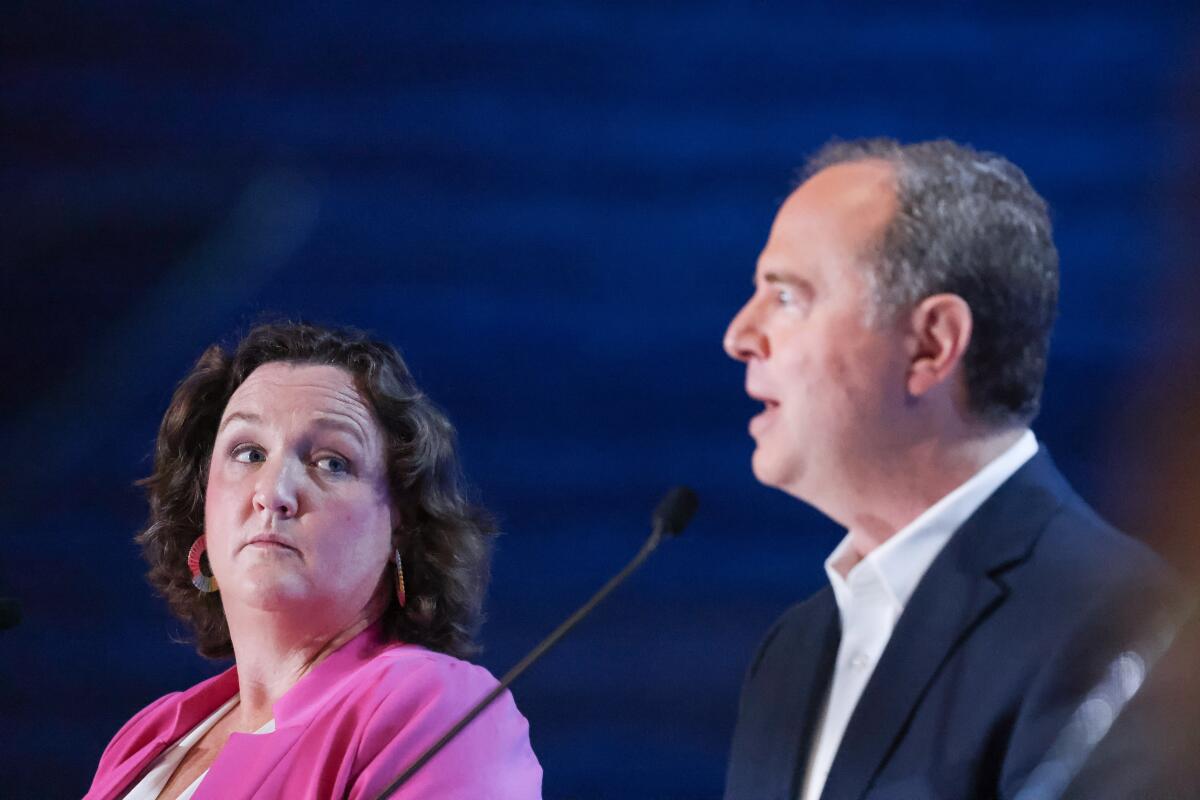
Politics
- Porter and Schiff are neck and neck in the California Senate race, heading for a runoff, poll shows.
- Assembly Speaker Robert Rivas endorses Rep. Adam Schiff in California’s U.S. Senate race.
- Why the fall of Kevin McCarthy leaves California Republicans in a tough spot.
Sports
- Why the World Series champion Rangers have the smart kids.
- ‘Why did the Dodgers let you go?’ Corey Seager is asked after the Rangers’ World Series win.
- Shohei Ohtani is officially a free agent. Seven things to know as the sweepstakes begins.
More big stories
- Mayor Bass pushes for more testing before permitting robotaxis in Los Angeles.
- Allegations of sexual harassment, armed surgeon roil top L.A. teaching hospital.
- The LAPD fireworks explosion has cost the city $9.5 million so far, with number expected to rise.
- An activist sues L.A. over a fight with Kevin de León, saying that a toy giveaway needed more security.
- The suspect in Tupac Shakur’s killing, an admitted Crips ‘shot caller,’ won’t face the death penalty.
- Six Flags and Knott’s Berry Farm owners to merge in a theme park megadeal.
- Up to 4 inches of rain is expected in parts of Northern California this weekend.
- L.A. Unified to pay $19.9 million to settle sexual abuse claims against a teacher’s aide.
- A divide over the Israel-Hamas war flares at UC Berkeley Law.
- Earning a master’s degree in prison is now possible in a ‘groundbreaking’ California program.
- Migos’ Quavo and Offset mark the one-year anniversary of Takeoff’s shooting death.
- Shoppers’ holiday spending is expected to top $957 billion, a record amount.
Get unlimited access to the Los Angeles Times. Subscribe here.
Commentary and opinions
- Opinion: Palestinian Christians are losing loved ones in Israel’s bombing in Gaza. Where’s the outcry from Western Christian communities?
- Opinion: They traveled on Metro for a week and loved it. Can two dozen German journalists be wrong?
- Opinion: Gas stoves are bad for your health. So is the industry’s Big Tobacco-style coverup.
Today’s great reads
Blind faith: A visually impaired woman’s journey up a towering California summit. Eline Øidvin is among a growing number of outdoor adventure athletes who refuse to let disabilities reduce them to spectators.
Other great reads
- Taraji P. Henson never thought she would launch a hair-care line. Now she’s a ‘force to be reckoned with.’
- How a ‘shocking’ play about slavery set off a firestorm at Santa Monica College.
- Why are so many actors launching their own businesses? Inside the growing movement.
- Can ADU rental income help this family move from their tiny home? They’re hopeful.
- 20 female celebrities with lucrative businesses beyond Hollywood.
- How Erica Tremblay markets her movie without ‘Killers of the Flower Moon’ money.
How can we make this newsletter more useful? Send comments to essentialcalifornia@latimes.com.
For your downtime
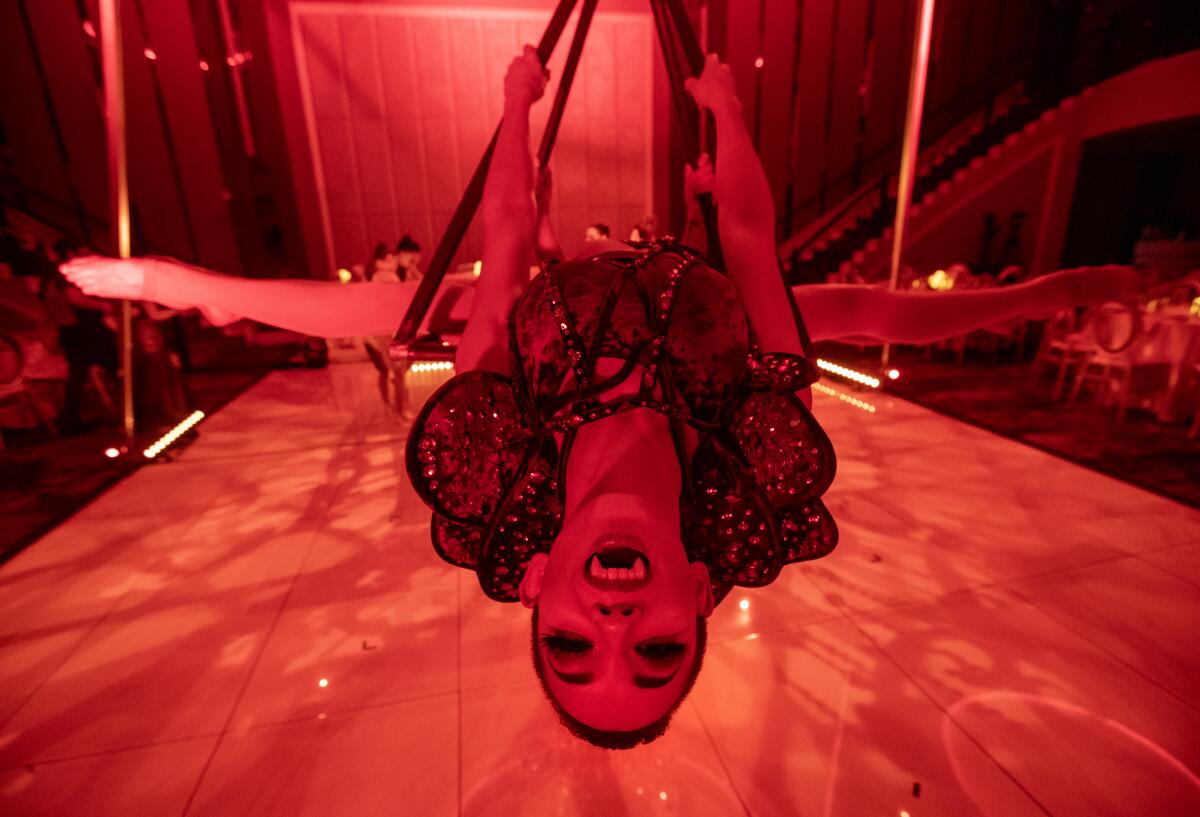
Going out
- 🧛♀️🩸Acrobatic vampires and ‘simulated blood sucking’: This is not normal dinner theater.
- 🎥 ‘All Dirt Roads Taste of Salt,’ one of the year’s great debuts, is a major work of art.
- 🐈 I wanted to take my cat on a hike in L.A. What could possibly go wrong?
- 👭Would you pay $200 a month to make friends in L.A.? You’ll need to get in line.
Staying in
- 📖 L.A. ‘Hood Witch’ Bri Luna debuts new book ‘Blood Sex Magic.’
- 📺 ‘Planet Earth’ returns for a third installment, focusing on humanity’s effect on nature.
- 🍲 Here’s a recipe for tortellini in brodo.
- ✏️ Get our free daily crossword puzzle, sudoku, word search and arcade games.
And finally ... a great photo
Show us your favorite place in California! Send us photos you have taken of spots in California that are special — natural or human-made — and tell us why they’re important to you.
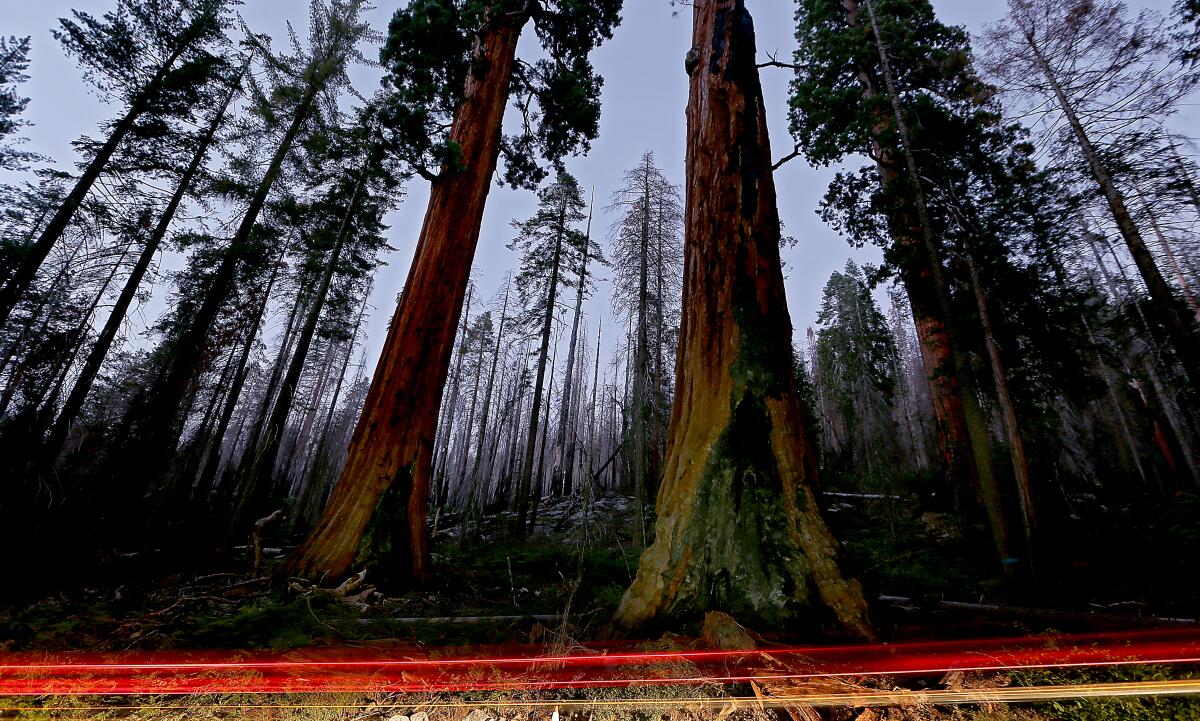
Today’s great photo is from Times photographer Luis Sinco at Sequoia National Park in the Sierra Nevada. Scientists warn that nearly all of the Sierra Nevada could become “zombie forests” by the end of the century if humans fail to slow climate change.
Have a great day, from the Essential California team
Ryan Fonseca, reporter
Elvia Limón, multiplatform editor
Kevinisha Walker, multiplatform editor
Laura Blasey, assistant editor
Check our top stories, topics and the latest articles on latimes.com.
Start your day right
Sign up for Essential California for news, features and recommendations from the L.A. Times and beyond in your inbox six days a week.
You may occasionally receive promotional content from the Los Angeles Times.


